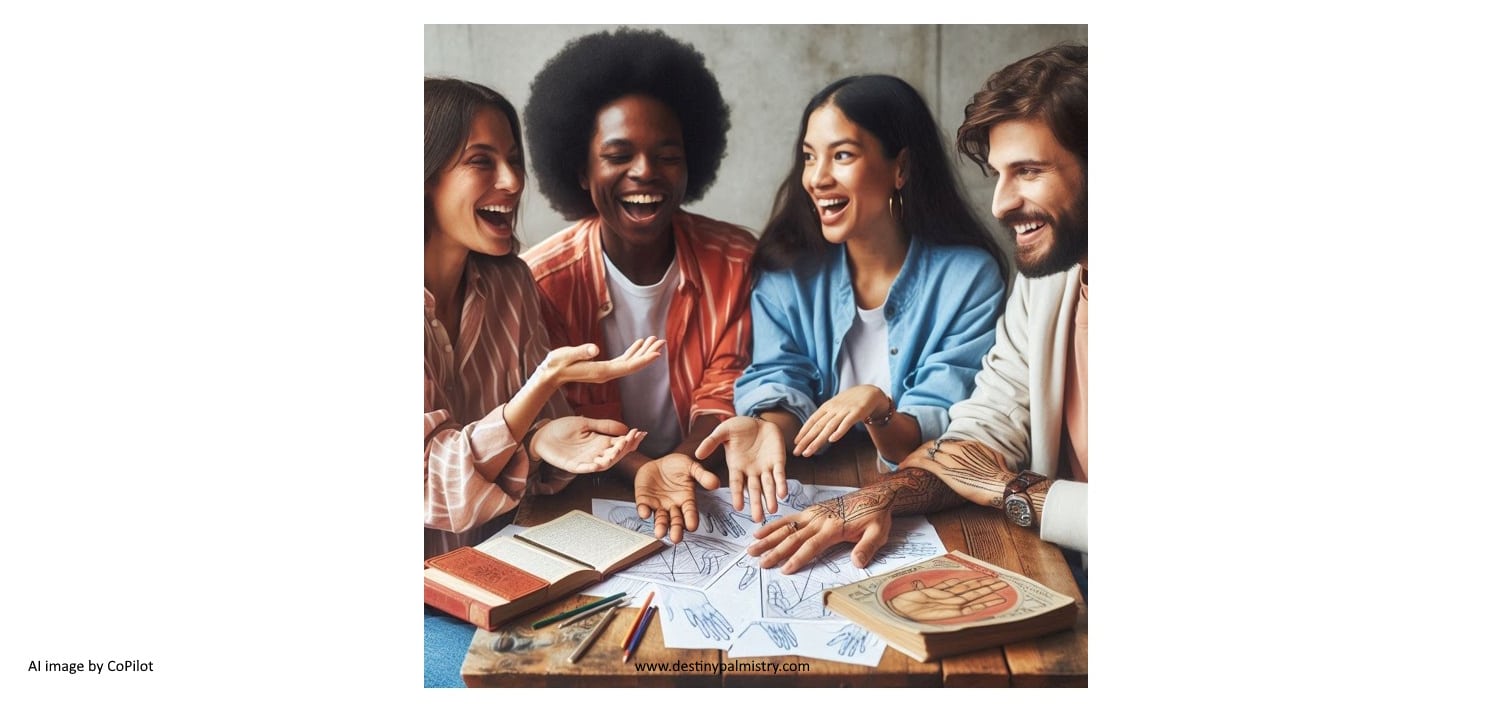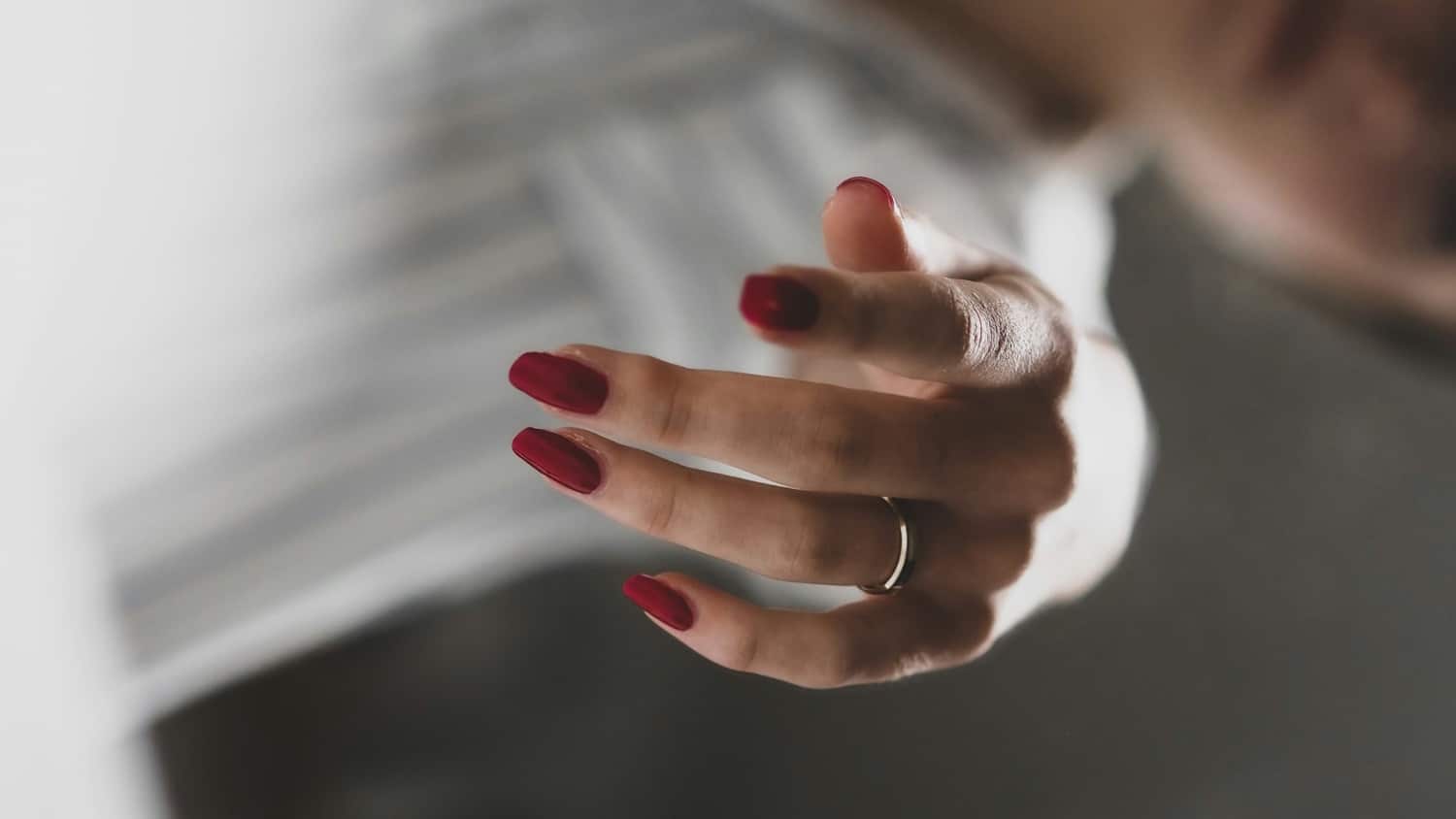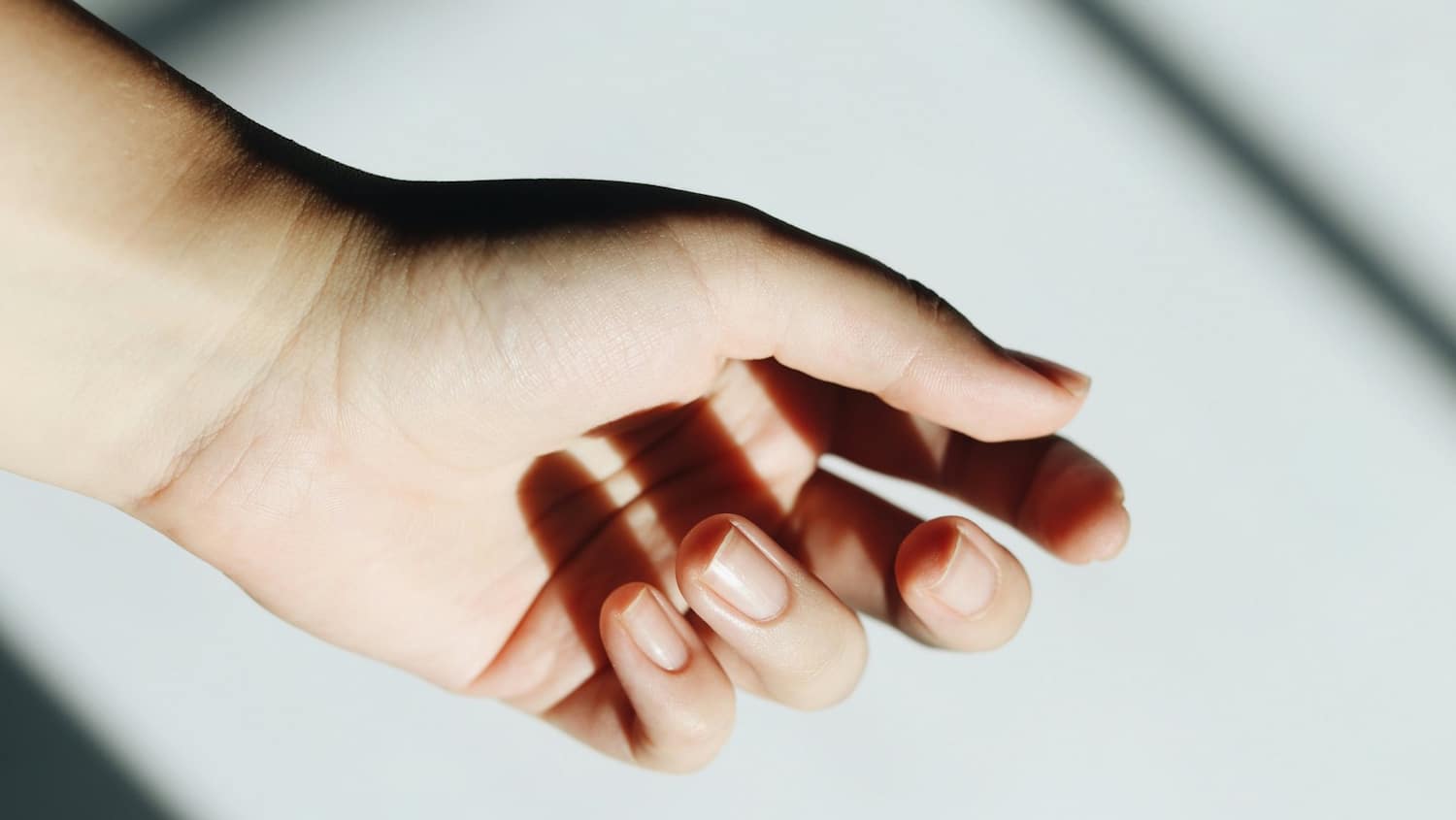This article analysing the whole hand is an excerpt from my book Destiny Palmistry: Character Awareness. Sari Puhakka.
Analysing the Whole Hand to Reveal Personality Traits
Each of us possesses a set of hand features that are as unique as our fingerprints. The quest for balance in these features can provide intriguing clues, shedding light on how the shape of the hand holds significant meaning in character analysis. Analysing the whole hand is important in palmistry so that we understand the personality that goes with the specific lines.
The energy we emit is distributed across various areas of the hand. These areas can be visually divided into four parts: mind, body, conscious, and subconscious. The left and right sides, and the top and bottom. When these regions are relatively equal in size and weight, it signifies a balance of the psyche.

The top half and the lower half of the hand
Once you grasp the meanings of the fingers and mounts, these areas become practical tools. They aid in the understanding of the hand’s shape and how to assess character from its form. The top half includes fingers and mounts below them as the area of the mind. The lower section of the palm is the area of the body. The active, conscious zone is the thumb side, and the inactive, subconscious area is the outer part of the palm, the pinkie side.

These regions can help determine the distribution of an individual’s drive. They are notable when there are distinct differences in the development of the hand, such as thin, thick or crooked fingers, broad or flat mounts. Sometimes irregularly shaped hands. For instance, a person with thin fingers may be more sensitive and artistic, while someone with thick fingers may be more practical and grounded.
Simply put, the active side represents extroversion, and the inactive side is introversion. Leaning fingers and prominent Mounts in one of these areas help us to see whether the person is gregarious and friendly or reclusive and shy.
THE BODY (LOWER SECTION)
The lower half (including the thumb) signifies the body in an intuitive, practical and physical sense. If the palm’s bottom half appears heavier than the fingers, then the person will likely be driven by practical matters and rely on instinct and gut feelings before the intellect. Energy is abundant and is most likely directly driven into physical activities.
On an extended palm, feelings dictate mostly everything about their life. Such individuals tend to exhibit sudden mood fluctuations and instinctive impulses before engaging in rational, thought-out calculations. The longer and narrower the palm, the greater the instability is demonstrated in the personality.
The active, conscious body area (thumb area) refers to the awareness of needs and drives, as well as alertness to external world circumstances (social life), and the amount of energy directed to the ego. It also encompasses the consciousness of instincts and physical energy.
In the inactive subconscious body zone, specifically the mount of Moon (located in the lower section of the palm on the pinkie side), we refer to the creative, nurturing, sensitive, receptive, and emotional aspects. It is also where it shows the individual’s core identity (sense of self) and feelings of individuality, including the sex instinct.
THE MIND (THE UPPER SECTION)
The upper region (the fingers and top mounts) represents the thinking and intellectual side. If the top area is more developed than the lower body area, the use of intelligence and knowledge has more importance than instincts or physical activities. This type of hand could belong to someone motivated and ambitious, with a need to express themselves. The energy would be directed to intellectual matters.
The active, conscious mind area (index finger region) refers to the individual’s public image or ‘persona.’ Here, we observe the keen awareness and faculty of learning, as well as the mental energy required for responsibility, authority, ambition, and self-confidence. It is the image that the person projects to the public.
The inactive subconscious mind area (pinkie and ring finger region) refers to the hidden expression of one’s achievement and what the individual’s conception is of himself (his inherent worth), how they feel about relationships, social life, creativity, and communication between the person and himself (or herself).
This article analysing the whole hand is an excerpt from my book Destiny Palmistry: Character Awareness. Sari Puhakka. Get the printed version here.
Why the Left and Right Palm Lines are Different?
Why the Left and Palm Lines Are Different In palmistry, the hand a person writes with is almost always their dominant hand, reflecting conscious actions and engagement with the outer world. Why the left and right palm lines are different is that the non-dominant hand, tends to be more relaxed and carries a greater number…
Sensitivity Signs in the Hands: What Your Hands Reveal

Understanding Sensitivity Signs in the Hands: A Spiritual Reflection Sensitivity is often misunderstood. In a world that praises resilience and boldness, those of us who feel deeply can sometimes be seen as fragile or overly emotional. But I believe sensitivity is a gift—a spiritual compass that allows us to connect more profoundly with others, with…
What Does a Psychic Hand Look Like? Signs of Intuition.

What Does a Psychic Hand Look Like? Signs of Intuition in Palmistry. In the ancient art of palmistry, the hands are more than physical tools—they are spiritual maps, revealing the soul’s journey, emotional depth, and even psychic potential. Among the various hand types studied by palmists, the psychic hand is notable for its indication of…


